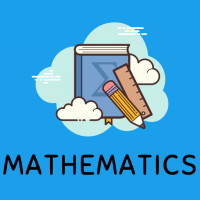Class 9 Exam > Class 9 Questions > Direction: In the following questions, a sta...
Start Learning for Free
Direction: In the following questions, a statement of assertion (A) is followed by a statement of reason (R). Mark the correct choice as:
Assertion : When we stop pedalling a bicycle it slows down.
Reason : Force of friction always acts in the direction of motion.
- a)Both assertion (A) and reason (R) are true and reason (R) is the correct explanation of assertion (A).
- b)Both assertion (A) and reason (R) are true but reason (R) is not the correct explanation of assertion (A).
- c)Assertion (A) is true but reason (R) is false.
- d)Assertion (A) is false but reason (R) is true.
Correct answer is option 'C'. Can you explain this answer?
Most Upvoted Answer
Direction: In the following questions, a statement of assertion (A) i...
When we stop pedalling a bicycle it slows down due to force of friction which acts in the opposite direction of motion.
Free Test
| FREE | Start Free Test |
Community Answer
Direction: In the following questions, a statement of assertion (A) i...
Assertion : When we stop pedalling a bicycle it slows down.
Reason : Force of friction always acts in the direction of motion.
The correct answer is option C, i.e., Assertion (A) is true but reason (R) is false.
Explanation:
- When we stop pedalling a bicycle, it slows down because the force of friction acts opposite to the direction of motion. However, the reason provided is incorrect.
- The force of friction always opposes the motion of an object. In the case of a bicycle, when we pedal, the force applied by our legs pushes the pedals, which in turn rotates the wheels. The friction between the tires and the road provides the necessary force to move the bicycle forward.
- When we stop pedalling, the force provided by our legs is no longer present, but the force of friction between the tires and the road still acts on the bicycle. This force of friction opposes the motion of the bicycle and gradually slows it down.
- It is important to note that the force of friction can act in both the direction of motion and opposite to the direction of motion, depending on the situation. In this case, the force of friction opposes the motion of the bicycle, causing it to slow down when we stop pedalling.
- The reason provided in the statement, stating that "Force of friction always acts in the direction of motion," is incorrect. Friction can act in either direction, depending on the circumstances.
- Therefore, the correct answer is option C: Assertion (A) is true but reason (R) is false.
Reason : Force of friction always acts in the direction of motion.
The correct answer is option C, i.e., Assertion (A) is true but reason (R) is false.
Explanation:
- When we stop pedalling a bicycle, it slows down because the force of friction acts opposite to the direction of motion. However, the reason provided is incorrect.
- The force of friction always opposes the motion of an object. In the case of a bicycle, when we pedal, the force applied by our legs pushes the pedals, which in turn rotates the wheels. The friction between the tires and the road provides the necessary force to move the bicycle forward.
- When we stop pedalling, the force provided by our legs is no longer present, but the force of friction between the tires and the road still acts on the bicycle. This force of friction opposes the motion of the bicycle and gradually slows it down.
- It is important to note that the force of friction can act in both the direction of motion and opposite to the direction of motion, depending on the situation. In this case, the force of friction opposes the motion of the bicycle, causing it to slow down when we stop pedalling.
- The reason provided in the statement, stating that "Force of friction always acts in the direction of motion," is incorrect. Friction can act in either direction, depending on the circumstances.
- Therefore, the correct answer is option C: Assertion (A) is true but reason (R) is false.

|
Explore Courses for Class 9 exam
|

|
Similar Class 9 Doubts
Question Description
Direction: In the following questions, a statement of assertion (A) is followed by a statement of reason (R). Mark the correct choice as:Assertion : When we stop pedalling a bicycle it slows down.Reason : Force of friction always acts in the direction of motion.a)Both assertion (A) and reason (R) are true and reason (R) is the correct explanation of assertion (A).b)Both assertion (A) and reason (R) are true but reason (R) is not the correct explanation of assertion (A).c)Assertion (A) is true but reason (R) is false.d)Assertion (A) is false but reason (R) is true.Correct answer is option 'C'. Can you explain this answer? for Class 9 2025 is part of Class 9 preparation. The Question and answers have been prepared according to the Class 9 exam syllabus. Information about Direction: In the following questions, a statement of assertion (A) is followed by a statement of reason (R). Mark the correct choice as:Assertion : When we stop pedalling a bicycle it slows down.Reason : Force of friction always acts in the direction of motion.a)Both assertion (A) and reason (R) are true and reason (R) is the correct explanation of assertion (A).b)Both assertion (A) and reason (R) are true but reason (R) is not the correct explanation of assertion (A).c)Assertion (A) is true but reason (R) is false.d)Assertion (A) is false but reason (R) is true.Correct answer is option 'C'. Can you explain this answer? covers all topics & solutions for Class 9 2025 Exam. Find important definitions, questions, meanings, examples, exercises and tests below for Direction: In the following questions, a statement of assertion (A) is followed by a statement of reason (R). Mark the correct choice as:Assertion : When we stop pedalling a bicycle it slows down.Reason : Force of friction always acts in the direction of motion.a)Both assertion (A) and reason (R) are true and reason (R) is the correct explanation of assertion (A).b)Both assertion (A) and reason (R) are true but reason (R) is not the correct explanation of assertion (A).c)Assertion (A) is true but reason (R) is false.d)Assertion (A) is false but reason (R) is true.Correct answer is option 'C'. Can you explain this answer?.
Direction: In the following questions, a statement of assertion (A) is followed by a statement of reason (R). Mark the correct choice as:Assertion : When we stop pedalling a bicycle it slows down.Reason : Force of friction always acts in the direction of motion.a)Both assertion (A) and reason (R) are true and reason (R) is the correct explanation of assertion (A).b)Both assertion (A) and reason (R) are true but reason (R) is not the correct explanation of assertion (A).c)Assertion (A) is true but reason (R) is false.d)Assertion (A) is false but reason (R) is true.Correct answer is option 'C'. Can you explain this answer? for Class 9 2025 is part of Class 9 preparation. The Question and answers have been prepared according to the Class 9 exam syllabus. Information about Direction: In the following questions, a statement of assertion (A) is followed by a statement of reason (R). Mark the correct choice as:Assertion : When we stop pedalling a bicycle it slows down.Reason : Force of friction always acts in the direction of motion.a)Both assertion (A) and reason (R) are true and reason (R) is the correct explanation of assertion (A).b)Both assertion (A) and reason (R) are true but reason (R) is not the correct explanation of assertion (A).c)Assertion (A) is true but reason (R) is false.d)Assertion (A) is false but reason (R) is true.Correct answer is option 'C'. Can you explain this answer? covers all topics & solutions for Class 9 2025 Exam. Find important definitions, questions, meanings, examples, exercises and tests below for Direction: In the following questions, a statement of assertion (A) is followed by a statement of reason (R). Mark the correct choice as:Assertion : When we stop pedalling a bicycle it slows down.Reason : Force of friction always acts in the direction of motion.a)Both assertion (A) and reason (R) are true and reason (R) is the correct explanation of assertion (A).b)Both assertion (A) and reason (R) are true but reason (R) is not the correct explanation of assertion (A).c)Assertion (A) is true but reason (R) is false.d)Assertion (A) is false but reason (R) is true.Correct answer is option 'C'. Can you explain this answer?.
Solutions for Direction: In the following questions, a statement of assertion (A) is followed by a statement of reason (R). Mark the correct choice as:Assertion : When we stop pedalling a bicycle it slows down.Reason : Force of friction always acts in the direction of motion.a)Both assertion (A) and reason (R) are true and reason (R) is the correct explanation of assertion (A).b)Both assertion (A) and reason (R) are true but reason (R) is not the correct explanation of assertion (A).c)Assertion (A) is true but reason (R) is false.d)Assertion (A) is false but reason (R) is true.Correct answer is option 'C'. Can you explain this answer? in English & in Hindi are available as part of our courses for Class 9.
Download more important topics, notes, lectures and mock test series for Class 9 Exam by signing up for free.
Here you can find the meaning of Direction: In the following questions, a statement of assertion (A) is followed by a statement of reason (R). Mark the correct choice as:Assertion : When we stop pedalling a bicycle it slows down.Reason : Force of friction always acts in the direction of motion.a)Both assertion (A) and reason (R) are true and reason (R) is the correct explanation of assertion (A).b)Both assertion (A) and reason (R) are true but reason (R) is not the correct explanation of assertion (A).c)Assertion (A) is true but reason (R) is false.d)Assertion (A) is false but reason (R) is true.Correct answer is option 'C'. Can you explain this answer? defined & explained in the simplest way possible. Besides giving the explanation of
Direction: In the following questions, a statement of assertion (A) is followed by a statement of reason (R). Mark the correct choice as:Assertion : When we stop pedalling a bicycle it slows down.Reason : Force of friction always acts in the direction of motion.a)Both assertion (A) and reason (R) are true and reason (R) is the correct explanation of assertion (A).b)Both assertion (A) and reason (R) are true but reason (R) is not the correct explanation of assertion (A).c)Assertion (A) is true but reason (R) is false.d)Assertion (A) is false but reason (R) is true.Correct answer is option 'C'. Can you explain this answer?, a detailed solution for Direction: In the following questions, a statement of assertion (A) is followed by a statement of reason (R). Mark the correct choice as:Assertion : When we stop pedalling a bicycle it slows down.Reason : Force of friction always acts in the direction of motion.a)Both assertion (A) and reason (R) are true and reason (R) is the correct explanation of assertion (A).b)Both assertion (A) and reason (R) are true but reason (R) is not the correct explanation of assertion (A).c)Assertion (A) is true but reason (R) is false.d)Assertion (A) is false but reason (R) is true.Correct answer is option 'C'. Can you explain this answer? has been provided alongside types of Direction: In the following questions, a statement of assertion (A) is followed by a statement of reason (R). Mark the correct choice as:Assertion : When we stop pedalling a bicycle it slows down.Reason : Force of friction always acts in the direction of motion.a)Both assertion (A) and reason (R) are true and reason (R) is the correct explanation of assertion (A).b)Both assertion (A) and reason (R) are true but reason (R) is not the correct explanation of assertion (A).c)Assertion (A) is true but reason (R) is false.d)Assertion (A) is false but reason (R) is true.Correct answer is option 'C'. Can you explain this answer? theory, EduRev gives you an
ample number of questions to practice Direction: In the following questions, a statement of assertion (A) is followed by a statement of reason (R). Mark the correct choice as:Assertion : When we stop pedalling a bicycle it slows down.Reason : Force of friction always acts in the direction of motion.a)Both assertion (A) and reason (R) are true and reason (R) is the correct explanation of assertion (A).b)Both assertion (A) and reason (R) are true but reason (R) is not the correct explanation of assertion (A).c)Assertion (A) is true but reason (R) is false.d)Assertion (A) is false but reason (R) is true.Correct answer is option 'C'. Can you explain this answer? tests, examples and also practice Class 9 tests.

|
Explore Courses for Class 9 exam
|

|
Signup to solve all Doubts
Signup to see your scores go up within 7 days! Learn & Practice with 1000+ FREE Notes, Videos & Tests.




























